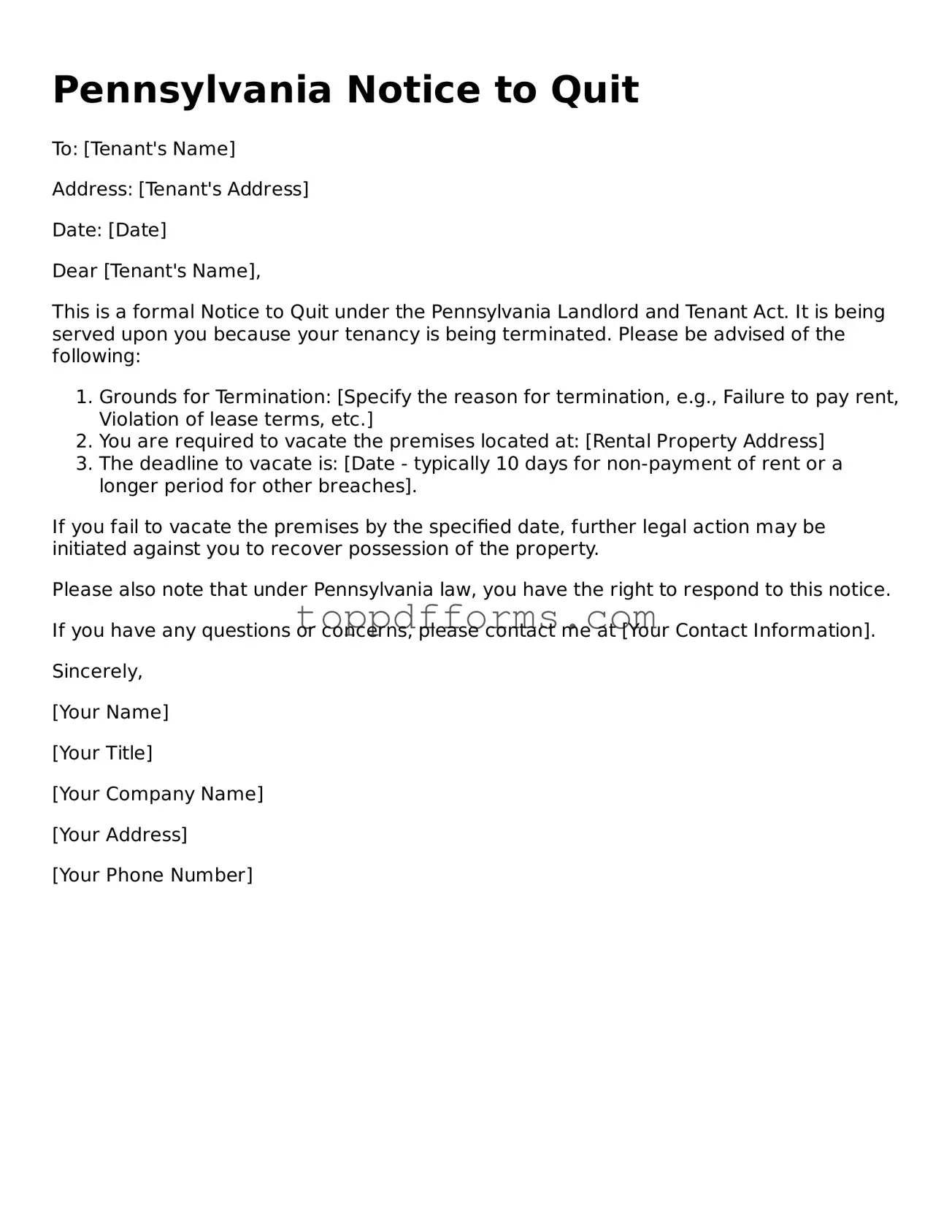What is a Pennsylvania Notice to Quit form?
The Pennsylvania Notice to Quit form is a legal document that a landlord uses to inform a tenant that they must vacate the rental property. This notice is typically the first step in the eviction process. It outlines the reason for the eviction and provides a specific timeframe for the tenant to leave the premises.
When should a landlord use a Notice to Quit?
A landlord should use a Notice to Quit when a tenant has violated the lease agreement, failed to pay rent, or engaged in illegal activities on the property. The notice serves as a formal warning and gives the tenant an opportunity to correct the issue or prepare to move out.
How long does a tenant have to respond to a Notice to Quit?
The response time can vary based on the reason for the notice. Generally, a tenant has 10 days to respond if the notice is related to non-payment of rent. For other lease violations, the timeframe may be longer, often 30 days. It is crucial for tenants to read the notice carefully to understand their obligations.
What happens if a tenant ignores the Notice to Quit?
If a tenant ignores the Notice to Quit, the landlord may proceed with the eviction process. This typically involves filing a complaint in court. Ignoring the notice can lead to a judgment against the tenant, resulting in the loss of their rental unit and potentially affecting their rental history.
Can a tenant contest a Notice to Quit?
Yes, a tenant can contest a Notice to Quit. If the tenant believes the notice is unjust or the eviction is unwarranted, they can respond to the notice and present their case in court. It is advisable for tenants to seek legal assistance to understand their rights and options.
Is a Notice to Quit the same as an eviction notice?
No, a Notice to Quit is not the same as an eviction notice. The Notice to Quit is a preliminary step that informs the tenant of the need to vacate. An eviction notice is issued after the Notice to Quit if the tenant fails to comply. The eviction process involves legal proceedings, which can lead to a court order for the tenant to leave the property.
